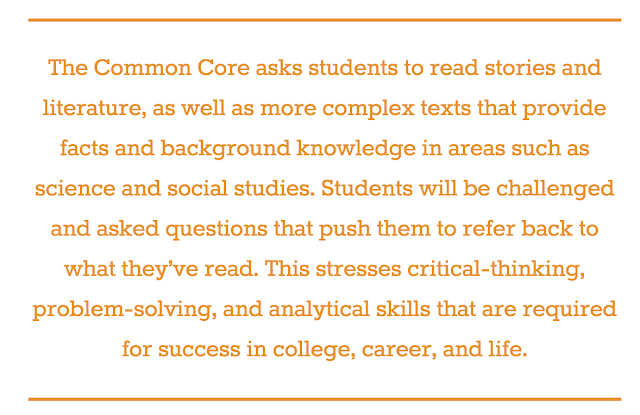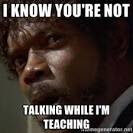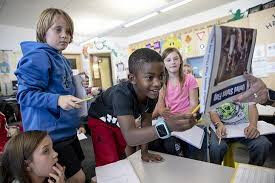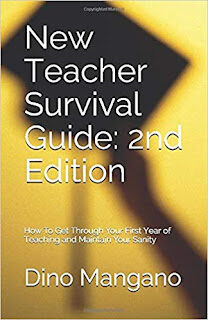The Evolving History Classroom: from Who and What to How
By Guest Blogger: Dino Mangano
History. It’s the class we love to teach, and the class many of our students dread attending. We history teachers have immersed ourselves in the content for years. We can’t get enough of conversations about cultural revolutions, ancient civilizations, and dynamic world leaders. Our students however, care little for these things, and definitely don’t see the need to memorize the dates of Civil War battles, or to explain the effects the Mongol Empire had on world trade (oh, I could talk Mongols for hours!)
And so, for generations, history class has become the period of the day where many of our students write notes to friends, or sneak in a quick nap.
Enter Common Core
In the last few years, there has been a major shift in focus in all Social Studies classes. Yes our content standards are still there, and are still important, but gone are the days of memorizing dates and names for a standardized test.
Now, the focus is on literacy in the history classroom. Reading, writing, deep thinking, defending claims with evidence, are the new priorities. And while this is infinitely more interesting for the average teenager (what teen doesn’t love a good debate? Ask anybody who’s raised one), the looming question for teachers is….
How do we do this?
The Answer : Mindset Shift
History teachers must completely change the way they think of their classroom, and the purpose it serves. We can no longer think of ourselves as the keepers of secret historical knowledge, that we must pour into our students, (enter the age of “Just ask Siri” or “I’ll Google It”). Our classrooms must become a place where students learn the skills and thought process needed to become critical thinking citizens themselves. (That old ‘teach a man to fish’ analogy).This takes a drastic change in how we think about planning and designing learning experiences for our students. We can no longer rely on the “read section 3 and answer questions 1-5 by the end of the hour” routine. In fact, I begin each year by making a pledge to my students “I vow, you will never have to answer the questions in the textbook.” This usually earns me a standing ovation… until they hear how many essays they’ll be writing.
When planning my daily/weekly/unit lessons, my focus shifts from the content standards to the Common Core Literacy Standards. It’s these standards that I use to plot the path of my course over the year, create major assessments, and most importantly the standards whose data I track. Content standards become a backdrop. They
become one of the tools we use to teach rigorous reading and writing, not the main focus of the lesson itself.
 Right now, there are history teachers reading this who are screaming “Blasphemy!” and wanting to splash holy water on me. I’ve worked with those teachers, and had those conversations. “But Dino, I created this 47 slide PowerPoint about the War of 1812. It’s beautiful. I’ve been using it for a decade I’m not about to scrap it.”
Right now, there are history teachers reading this who are screaming “Blasphemy!” and wanting to splash holy water on me. I’ve worked with those teachers, and had those conversations. “But Dino, I created this 47 slide PowerPoint about the War of 1812. It’s beautiful. I’ve been using it for a decade I’m not about to scrap it.”

The key sticking point for this teacher was the focus of his lesson. He wanted his kids to KNOW as many facts about the War of 1812. And that is “sort of” important in a history class. What is more important than regurgitating facts they will likely forget, is ’ being able to explain the causes and effects of the war , while using evidence found in complex primary sources in a well written essay. It’s not WHAT they’re learning, it’s HOW they’re learning.
So, when planning, don’t begin with the textbook! Begin with your learners. What are their strengths, interests and what do they like to do? Be sure you are including this key factor when designing instruction. Some students might prefer to write a poem about a particular topic, while other students choose a poster or a podcast. When you give your students’ choice, then they find their voice and engagement comes from within intrinsic and not from a daily raffle or treasure box.
Now let’s be clear I am not saying you should scrap your history curriculum all together. What I am recommending is you begin with a topic and find multiple primary sources about the topic, and have the students use collaborative routines to analyze the documents. They can now use that shared information to hold a debate, write an essay, create a mini-lesson they can teach, etc (choice).
These interactive, rigorous, collaborative strategies will not only make the lesson more engaging, but they’ll incorporate the Literacy Standards seamlessly, and benefit ALL your students, especially ELL and SPED students. And perhaps the English teachers will love you!
There’s nothing better than a well crafted text set to allow students to grapple with rigor primary source
reading, and at the same time engage with each other. The first few times I’ll assign a set of primary text for a topic, and teach the students how a proficient reader gets through the challenges of reading tough texts (mostly through the modeling process). Once the students become comfortable with text sets, their value in learning, and how to tackle them, I ask them to create their own text sets on a historical topic. While history standards/topics are being addressed in each step, the method in which we do so (text sets, creation of text sets, engagement routines such as games, think/pair/share, etc) allow the students experience rigorous reading/thinking far more than a textbook would allow. So don’t be afraid to let your students’ own their learning, teach one another, and have fun while learning.
As I’ve evolved from a traditional ‘sage on the stage’ social studies teacher, I can humbly say that I’ve learned from some incredible educators who’ve helped be become the kind of teacher I’ve always wanted to be, and create a classroom (I hope) most of my students enjoy learning and growing in.
Dino has been an educator for 20 years, both in Michigan and California. He currently teaches high school social studies in Chawanakee USD, as well as serves as an adjunct professor in the Teacher Prep Program as UCMerced. One of his true passions is supporting new teachers and helping them grow.
Dino’s Coaching Website: www.ManganoCoaching.com
Dino’s Book (on Amazon, eBook and paperback): “New Teacher Survival Guide: 2nd Edition” by Dino Mangano
Instagram: @mangano.instructional.coaching
Facebook: ManganoCoaching
Join our digital discussion on our Facebook group Teacher Prep Tech







